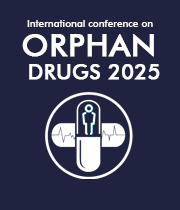Prevalence, Epidemiology and Forecasting
To guide public policy, rare diseases, a rising global public health concern, require an evidence-based estimate of global point prevalence. Forecasting disease outbreaks is extremely useful for efficiently planning and supplying resources. Rare diseases (RDs) are diverse, heterogeneous, and spread over the globe. Few are preventive or curable, the majority are chronic, and many lead to premature death. Despite their diversity, RDs have some characteristics in common due to their rarity, which needs a comprehensive public health strategy. The diversity of the data, which is derived from a variety of disparate information sources that are not standardized or difficult to combine, such as published case reports or systematic reviews, patient registries, expert opinions, and other anecdotal evidence, makes estimating the global point prevalence of RDs difficult. As RDs become a global policy objective of leaving no one behind, refinement of the epidemiological estimate of RDs is timely.
- Forecasting Model
- Disease Incidence and Prevalence
- Prediction Models
- Statistics and Algorithms

Sergey Suchkov
The Russian University of Medicine & Russian Academy of Natural Sciences, Russian Federation
Vladlen Slepak
University of Miami, United States
Harsha Rajasimha
Jeeva Clinical Trials, Inc, United States
Vladlen Slepak
University of Miami, United States
Harsha Rajasimha
Jeeva Clinical Trials, Inc, United States
Sergey Suchkov
The Russian University of Medicine & Russian Academy of Natural Sciences, Russian Federation


Title : Emerging solutions for inclusive orphan drug clinical trials management
Harsha Rajasimha, Jeeva Clinical Trials, Inc, United States
Title : Ectopically expressed olfactory receptors as an untapped family of drug targets. Discovery of agonists and antagonists of OR51E1, an understudied G protein-coupled receptor
Vladlen Slepak, University of Miami, United States
Title : Personalized and Precision Medicine (PPM) as a unique healthcare model to secure the human healthcare and biosafety among childhood
Sergey Suchkov, The Russian University of Medicine & Russian Academy of Natural Sciences, Russian Federation
Title : Orphan and rare disease emerging as a global public health priority through the view of personalized and precision medicine: How to use the latter to revolutionize pediatric services
Sergey Suchkov, The Russian University of Medicine & Russian Academy of Natural Sciences, Russian Federation
Title : Personalized and Precision Medicine (PPM) though the view of reproductive healthcare, pediatric services and natural family planning: an option for clinicians and caregivers realize the potential of genomics-informed care to secure the individualized human biosafety
Sergey Suchkov, The Russian University of Medicine & Russian Academy of Natural Sciences, Russian Federation
Title : Democratizing ASO drug discovery at La Jolla Labs
Melissa Keenan, La Jolla Labs, United States